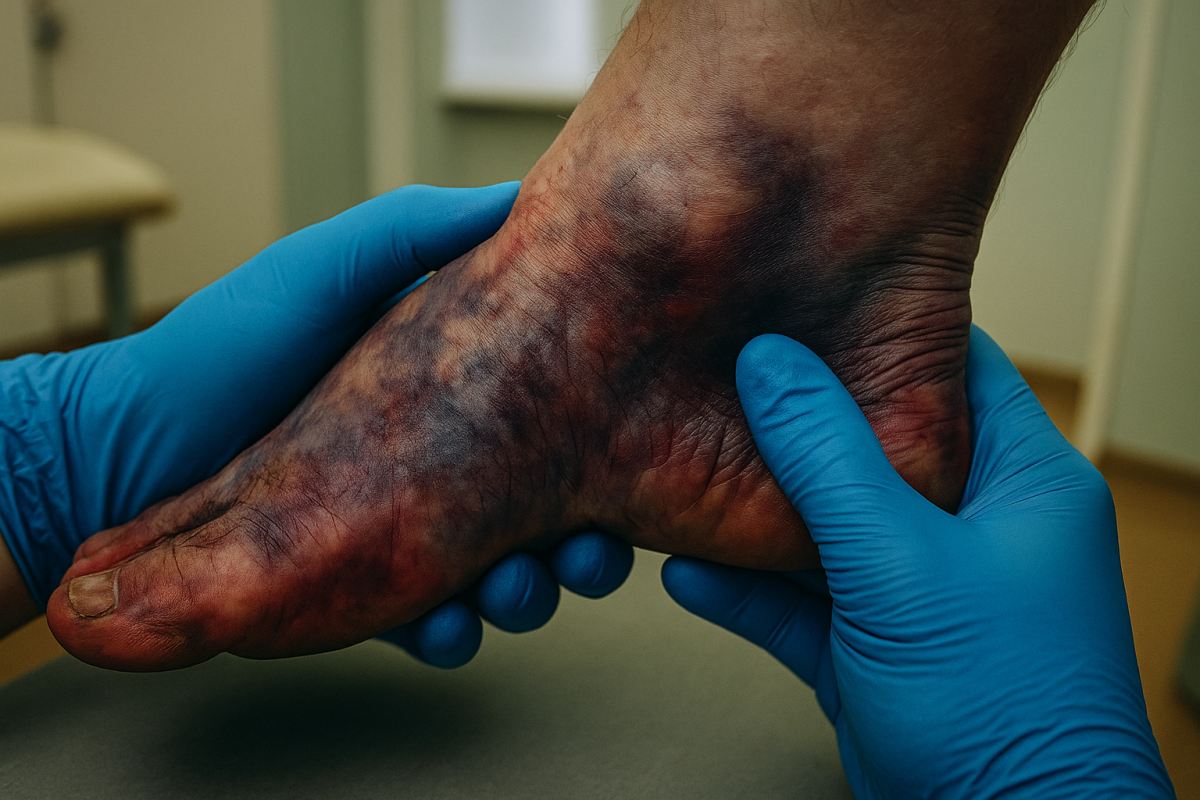 Blue Skin on Your Foot? Doctors Say This Could Be a Silent Killer
Blue Skin on Your Foot? Doctors Say This Could Be a Silent Killer

It started so small I almost missed it—a strange bluish patch near my ankle, like a fading bruise that had no business being there. No pain, no swelling, just… off. I chalked it up to midlife clumsiness, maybe a bump I forgot while walking the dog or rushing through the kitchen. But by the next morning, that patch had darkened, spread toward my toes, and brought with it an eerie coldness I couldn’t explain. My wife said it was probably circulation and handed me a blanket. I tried to believe her, but something told me to call the doctor, and when I did…
One day, I noticed the skin near my ankle looked… off. It wasn’t swollen or painful, but the color was strange—kind of bluish, almost like a bruise that hadn’t healed. I figured I must have bumped into something without realizing it. No big deal, right?
I went about my day, brushed it off, and told myself I was just getting older. I’m in my late 40s, and honestly, weird body changes don’t surprise me much anymore. But the next morning, it was still there—and darker. That dull blue shade had crept further down my foot, and now my toes felt colder than usual.
That’s when the worry crept in.
I showed my wife. She squinted, said, “Maybe it’s just circulation?” and handed me a blanket. But deep down, something didn’t feel right. I called my doctor, and thank God I did.
When I got to the clinic, the nurse looked concerned the second I took off my sock. They ran a Doppler ultrasound on my leg, and within the hour, I had a diagnosis I never expected: deep vein thrombosis—a blood clot. If I had waited even a few more days, it could have broken loose and traveled to my lungs.
The doctor said it bluntly: “This could have killed you.”
It still sends a chill down my spine.
Apparently, a lot of people ignore discolored feet and legs, thinking it’s “just aging,” “bad circulation,” or “no big deal.” But what I learned that day—and what I want everyone reading this to understand—is that your body is trying to tell you something. And sometimes, that little patch of discolored skin is more than just skin deep.
Discoloration can signal:
- Varicose veins – which may look harmless but can lead to blood pooling and serious vein disease.
- Chronic venous insufficiency – when your leg veins struggle to pump blood back up to your heart, causing swelling and color changes.
- Peripheral artery disease (PAD) – reduced blood flow due to narrowed arteries, increasing your risk of heart attacks and strokes.
- Ischemia – which means your tissues aren’t getting enough oxygen and can literally start to die.
- Or, like me, a dangerous clot hiding in plain sight.
None of these conditions should be ignored—especially if you’re over 40. Our bodies aren’t invincible. What seems like a cosmetic issue could actually be a red flag waving frantically beneath the surface.
The crazy thing is, I almost didn’t call the doctor. I almost convinced myself it was nothing, just like so many others probably do. But listening to that little nudge in my gut may have saved my life.
If you notice unusual coloring in your feet or lower legs—blue, purple, or even reddish tones that don’t fade—don’t wait. Don’t hope it goes away. See a doctor. Ask questions. Demand answers.
Because early action can make all the difference. I’m living proof of that.
Now, I check my feet and legs regularly. Not in a paranoid way—but as a habit. A healthy, life-saving habit. I tell my friends to do the same. Because that little patch of blue? It wasn’t just a color. It was a warning—and I’m lucky I listened.